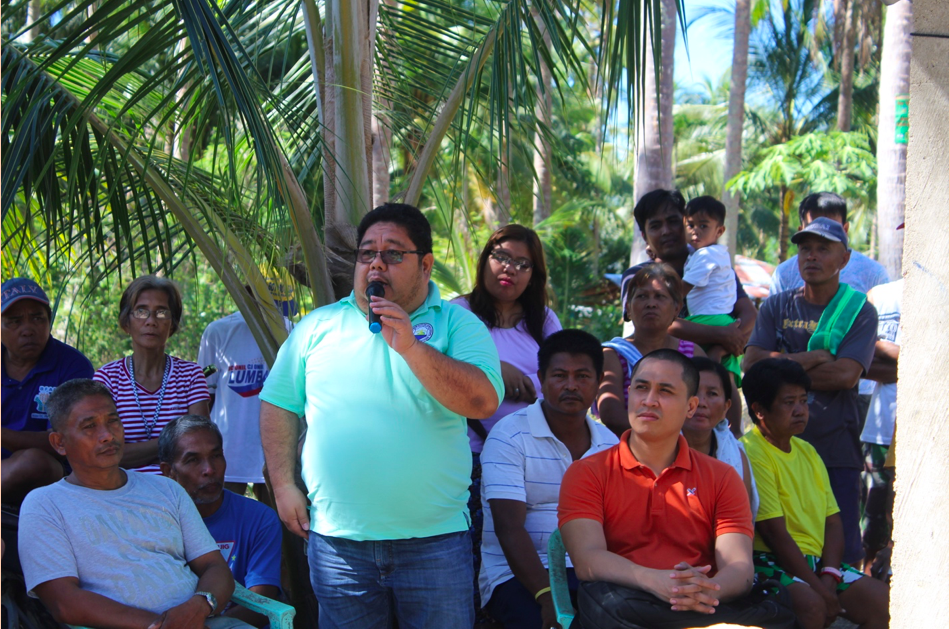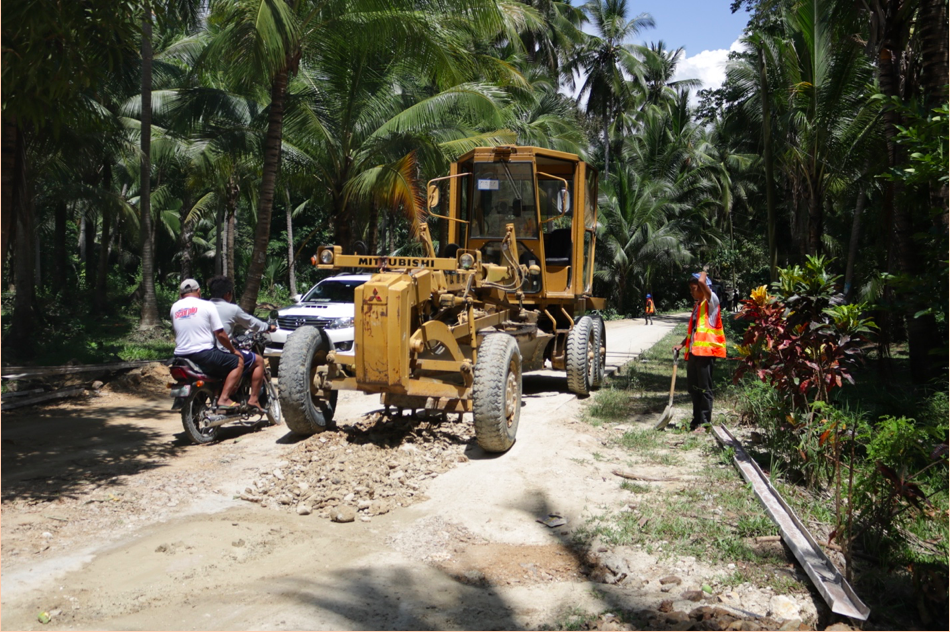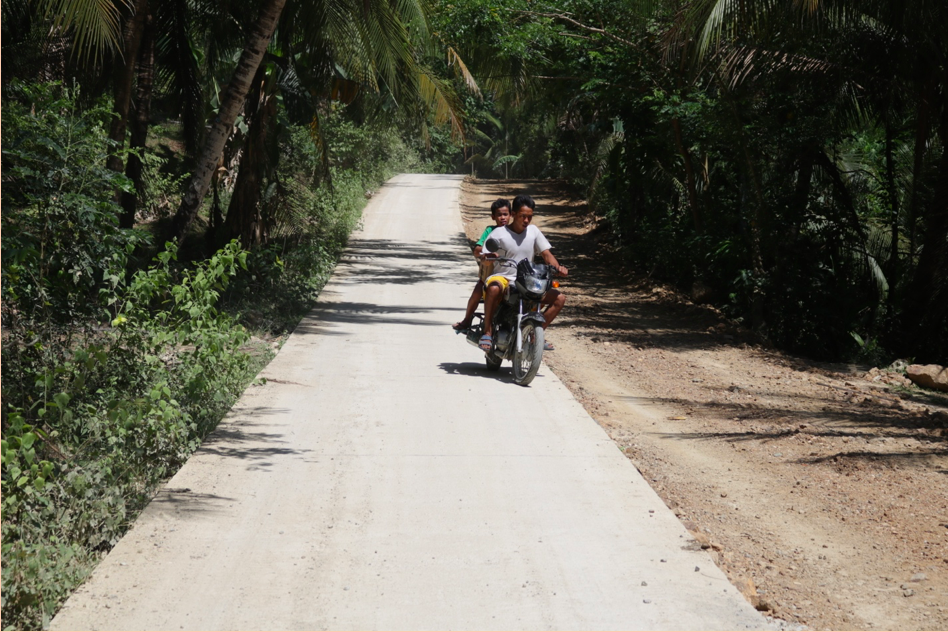 The “Seaweeds Production and Marketing of CaCFFA at Ragay Gulf” enterprise subproject aims to provide immediate livelihood to at least 60 CaCFFA farmer- and fisherfolk-members who were affected by typhoons. (Photo from Guinayangan LGU)
The “Seaweeds Production and Marketing of CaCFFA at Ragay Gulf” enterprise subproject aims to provide immediate livelihood to at least 60 CaCFFA farmer- and fisherfolk-members who were affected by typhoons. (Photo from Guinayangan LGU) PRDP: Guinayangan’s road to better seaweeds production and marketing
Typhoons Lando and Nona hit the third class Municipality of Guinayangan, Quezon in 2015 leaving damage to many residents especially those who engage in farming and fishing as their primary sources of income.
“Sabi nga ay kapag masama ang panahon, mahina ang kita (They say that when the weather is bad, the income is [also] negative),” Guinayangan Municipal Agriculturist Belina Rosales said.
During the said typhoons in Guinayangan, the new venture on seaweeds production of the Capuluan Central Fishermen/Farmers Association (CaCFFA) was destroyed. CaCFFA Chairperson Mauricio Watiwat shared that the said typhoons were so strong that their production almost dropped to zero. He added that their seaweeds production and fishing activities were disrupted.
Rehabilitation of seaweeds production
Demonstrating the famous Filipino trait of resilience, the Local Government Unit (LGU) of Guinayangan and the CaCFFA tied up to improve the seaweeds production in the area. Together, they proposed the “Seaweeds Production and Marketing of CaCFFA at Ragay Gulf” subproject for the fund support of the enterprise development (I-REAP) component of the Department of Agriculture-Philippine Rural Development Project (DA-PRDP).
The P1.39 million-worth subproject generally aims to improve the community’s standard of living and protect the coastal areas of the municipality. Specifically, the enterprise aims to provide immediate livelihood to at least 60 CaCFFA farmer- and fisherfolk-members who were affected by typhoons by generating P481,721 net income for the association during the first year of the Project intervention. In addition, this subproject will supplement the income of each CaCFFA member by P5,113.73 per cropping, which is thrice a year.
Guinayangan Mayor Cesar Isaac III recounted that the subproject beneficiaries used to depend only on fishing, wherein they do not earn a regular income. He said that through the PRDP-funded enterprise subproject, the CaCFFA members will be given an alternative source of income that will help support their daily needs.
“Malaki po ang maiko-contribute ng programang ito ng PRDP, ’yong I-BUILD and I-REAP, para po sa pag-unlad ng aming bayan (These programs of the PRDP, the I-BUILD and I-REAP, will contribute a lot in the development of our municipality),” Mayor Isaac expressed.

Guinayanagan Mayor Cesar Isaac III gives his message to the CaCFFA members during the pre-mission activity conducted by the representatives of the PRDP South Luzon PSO and CALABARZON RPCO. (Photo from CALABARZON RPCO)
Road development
Another ongoing PRDP subproject in the Municipality of Guinayangan is the Concreting of Manggagawa–Capuluan Central farm-to-market road (FMR) under the infrastructure development (I-BUILD) component.
With the total subproject cost of P118.13 million, the 18.81-kilometer FMR will traverse through the seven coastal barangays of Manggagawa, Himbubulo Este, Dancalan Central, Dancalan Caimawan, Arbismen, Capuluan Tulon, and Capuluan Central in Guinayangan.
“Malaki po ang maitutulong ngayon lalo na n’ong magkaroon kami ng kalsada, kasi dati po ’yong mga nahuhuli namin na mga isda, hindi na halos makarating ng bayan pagka masama ang kalsada (It is really a big help especially now that we have the [farm-to-market] road. Previously, it was hard for us to bring our catch to the market due to the poor road),” Watiwat shared.
The FMR, which directly leads to the site of CaCFFA’s seaweeds production and marketing subproject—an ideal set-up for PRDP subprojects to ensure its support to the commodity value chain—is expected to benefit at least 12,789 individuals and 2,877 households in the said barangays.
Mayor Isaac said, “Madali na po nilang [mga magsasaka at mangingisda] maiuuwi ang kanilang mga produkto at magiging maayos po ang kalidad ng produkto, sapagkat mabilis na maita-transfer ang kanilang mga product (It will be easier for them [the farmers and fishers] to bring their produce home and the quality of their products will improve, because they will be able to transfer their products faster.)
The I-BUILD subproject aims to reduce the travel time from the farm to market centers by 62.5 percent from 40 to 15 minutes, and lessen the hauling cost for farm produce by 46.67 percent from P75 to P40 per sack. It is also projected to lower post-harvest losses by up to three percent of the total produce within the road influence area.

With the total subproject cost of P118.13 million, the 18.81-kilometer FMR will traverse through the seven coastal barangays of Manggagawa, Himbubulo Este, Dancalan Central, Dancalan Caimawan, Arbismen, Capuluan Tulon, and Capuluan Central in Guinayangan. (Photo by Ana Francesca Chavez, DA-PRDP South Luzon PSO InfoACE Unit)
Additional benefits of the road and enterprise subprojects
Watiwat, who serves as the chief of the community’s Bantay Dagat (Deputized Fish Wardens), shared that he decided to organize the association to advocate the protection of their coastal areas and prevent illegal fishing activities. With CaCFFA, he also believes that he and the association members can maximize the assistance of government agencies, especially the DA, to improve their status of living.
To increase CaCFFA’s membership, Watiwat said, “Una po ’yong mapa-unlad lang namin ’yong ibinigay ninyo sa amin ngayon na tulong. ’Yon siguro number one ’yon na makakapaghikayat sa kanila (First, we have to develop this [enterprise development] intervention that you gave us. That [when the enterprise grows] will be the first thing that will encourage them).”
Through the I-REAP subproject, it is projected that more residents in Guinayangan and nearby towns will be encouraged to engage in seaweeds farming that will eventually contribute to increased seaweeds production and lesser incidence of illegal fishing in the area.
Based on the seaweeds farming trials conducted by the LGU and the Bureau of Fisheries and Aquatic Resources, it was noted that Guinayangan has the potential for a productive seaweeds farming.
CaCFFA was established in 2014, but it still has some lessons learned from the implementation of a PRDP subproject. Watiwat expressed his appreciation of the Project’s trainings, particularly on proper business planning and procurement. He said that the trainings will be useful for CaCFFA’s future ventures.
On the part of the Guinayangan Municipal LGU, Rosales stated that they will continue the regular monitoring of the subprojects to ensure that they can successfully improve the livelihood of the residents, especially the farmers and fisherfolk. She also noted that the LGU can adopt PRDP’s monitoring system to make sure that projects are properly accomplished.
When another typhoon comes, Watiwat shared that he and his fellow residents have prepared necessary measures and they continue finding ways to lessen the impact of typhoons, especially on their livelihood.
PRDP is a six-year intervention assisted by the World Bank and implemented as a national project of the DA to establish a modern, inclusive, value chain-oriented, and climate-smart agriculture and fisheries sector. ### (Gumamela Celes Bejarin, DA-PRDP South Luzon PSO InfoACE Unit)

The Concreting of Manggagawa–Capuluan Central farm-to-market road (FMR) under the infrastructure development (I-BUILD) component of PRDP is expected to benefit at least 12,789 individuals and 2,877 households in the Municipality of Guinayangan, Quezon. (Photo by Ana Francesca Chavez, DA-PRDP South Luzon PSO InfoACE Unit)
